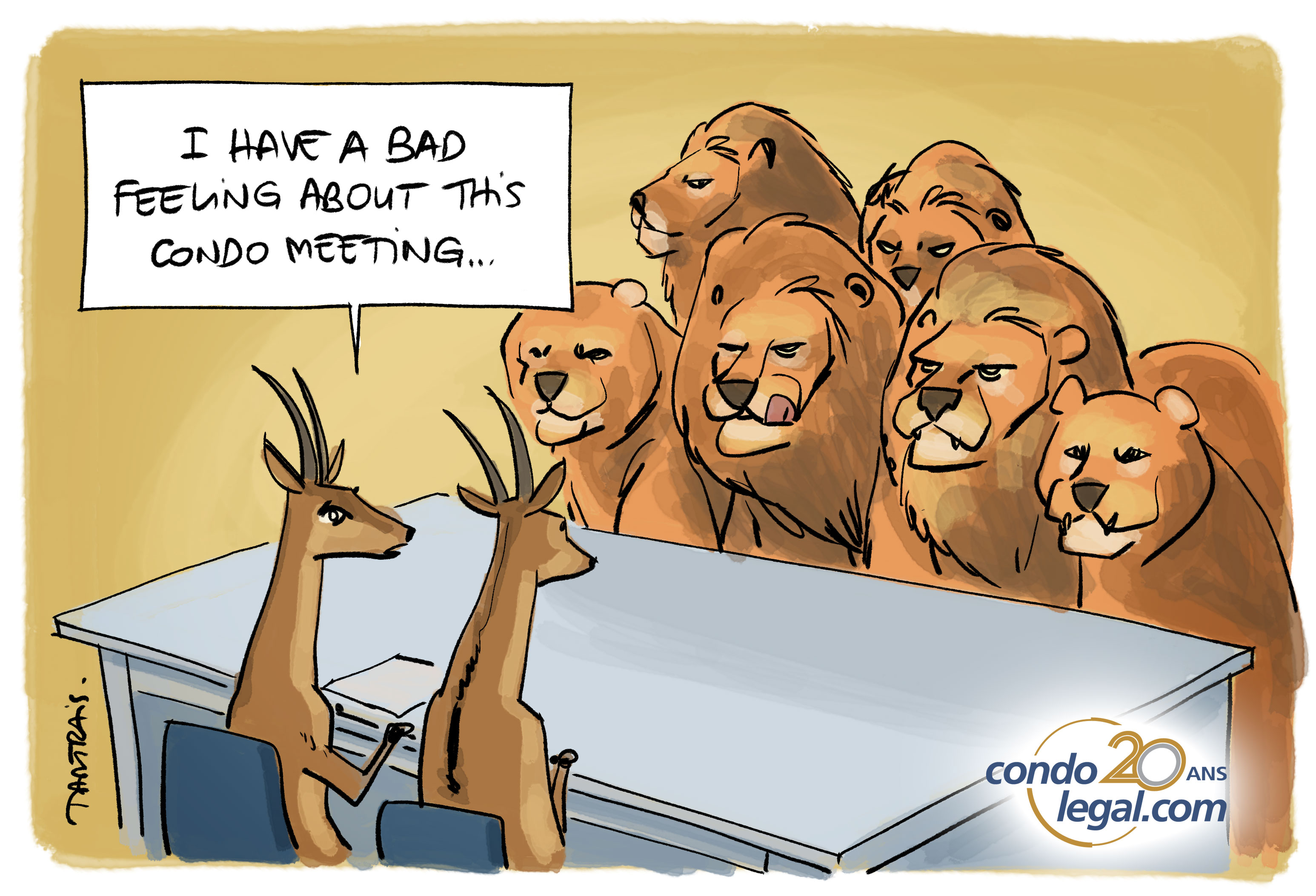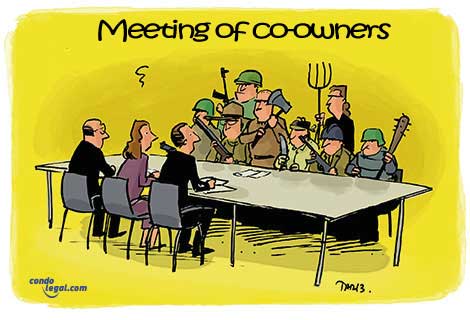Date published: 15/10/2023
How to organize a meeting of co-owners smoothly

October 15, 2023- The Meeting of co-owners is a major event in the life of a co-ownership. A meeting at least once a year, it is decisive since it allows the making of major decisions that impact the lives and finances of the co-owners. The board of directors' mission is to take care of the convening and holding of the meeting of co-owners but also of the execution of the decisions it votes. Decisions taken have to appear clear and careful planning is required. It is also important to understand the rules that apply to it.
Preparation of the Assembly of Co-owners
To prevent a co-owner from being excluded from the process of calling a meeting, the board of directors would have every interest in holding an adequate register of co-owners. This involves having copies of the property title identifying each of them. Only consultations of the land register and the deeds of sale make it possible to list, with accuracy, the individual co-owners (more than one co-owner per unit). In addition, each co-owner must provide the address of his domicile to the board of directors, in order to allow the appropriate sending of notices of the meeting. It is important to apply this instruction perfectly, otherwise the convening process could be tainted. The preparation of a meeting also requires collecting and revising the documentation to be sent to the co-owners (e.g. financial statements and draft resolutions). It is also necessary to plan the issues to be dealt with, the budget that will be present
Calling
The meeting of co-owners is convened at least once a year. It is expected to be held at an opportune time, which will have a positive impact on the participation rate. It is therefore not recommended to schedule a meeting on the eve of a public holiday or summer vacation. In addition, the choice of cramped and non-air-conditioned rooms, or corridors and underground garages, is to be avoided. A board of directors may also schedule other meetings during the year, if it deems it necessary to decide on urgent matters, or if it is necessary to consult the meeting on a new budget.
The notice of meeting
This notice is sent to all co-owners at least 10 days in advance, but not more than 45 days before the meeting. This document must state, at a minimum, the following:
- The date, time and place of the meeting;
- The agenda;
- The list of documents attached to it.
In addition, remember that if the apartment is in the name of two spouses (co-owners), the board of directors must summon them separately.
The agenda
This document must be precise and unequivocal, in order to avoid legal challenges to the scope of a resolution that could have been adopted. It must, at a minimum, list the following:
- Quorum and calling the Meeting to order;
- Election of the meeting officers
- Reading of the agenda;
- Board’s report;
- Presentation for comment of the minutes of the __ Annual Meeting (this item is not mandatory, as the minutes do not have to be adopted);
- Presentation of the financial statements;
- Presentation of the budget forecast for consultation purposes;
- Approval (if any) of work for the improvement, alteration or enlargement of the common portions;
- Approval (if applicable) of any amendment to the declaration of co-ownership;
- Approval (if applicable) of any act of acquisition or alienation of immovables by the syndicate;
- Election of the Board of Directors members:(a) Reading of the grounds for disqualification (b) Nomination of candidates (c) Voting (d) Acceptance of office;
- Varia;
- Closing of the meeting.
In addition to these topics, some others can be addressed. For example, the board of directors could propose replacing existing finishes in the lobby with high-quality materials. This item must be placed on the agenda, because only an enhanced majority vote in the meeting of co-owners will allow such work to be carried out.
Documents to attach
The law provides for a minimum number of documents to be attached to the notice of meeting. These are sent in advance to the co-owners in order to provide them with all the required lighting. They can then analyze, in peace, the scope of the subjects to be treated and thus vote with full knowledge of the facts. Here is the list of documents that, at a minimum, must be sent to the co-owners when holding an annual meeting:
The Minutes
Minutes of proceedings must be drawn up after each meeting. This must be sent to the co-owners within 30 days of the meeting of the meeting. Moreover, the Minutes do not constitute an accurate transcript of everything that was discussed, as their sole purpose is to disclose the deliberations and results of each vote. It is an official document attesting to the conclusions of the assembly. It contains mandatory information:
- The name of the syndicate of co-owners;
- The type of meeting (annual, special, make-up or transitional meetings);
- The date and place of the meeting;
- The time of the beginning of the meeting;
- The number of co-owners present or represented, as well as the number of votes they represent (in order to determine the quorum);
- The questions that appear on the agenda;
- The name of the president and the secretary of the meeting;
- The names of the non-members invited at the request of the Board of Directors;
- The names of the authors of the proposals made during the meeting and, if required, of the persons who assisted these proposals;
- The text of the resolutions put to the vote;
- The result of the vote under the heading of each item on the agenda;
- The result of each vote, in terms of number of co-owners and votes, in the case of a resolution requiring enhanced majority or double majority for its adoption;
- The voting system;
- The adjournment, if necessary, of the meeting, for lack of quorum;
- The time of the end of the assembly;
- The name and capacity of the persons who sign the minutes.
In addition, it is useful to attach the attendance sheet to the minutes, so that it can be checked whether or not the required quorum has been reached and the majority required for the adoption of the resolutions put to the vote can be calculated. Finally, the minutes are signed by the president and the secretary and must, in addition, be sent within 30 days of the meeting to all the co-owners. However, as authors Christine Gagnon and Yves Papineau point out, if the president of the meeting did not take notes and focused all his attention on the direction of the debates, the minutes could be signed only by the secretary. Now you know the different steps to organize a meeting of co-owners.
 ACKNOWLEDGEMENTS : This text was written with the collaboration of Yves Joli-Coeur, a lawyer in co-ownership law and a partner at the law firm Dunton Rainville.
ACKNOWLEDGEMENTS : This text was written with the collaboration of Yves Joli-Coeur, a lawyer in co-ownership law and a partner at the law firm Dunton Rainville.
 WARNING! The information in this column is of a general nature and does not in any way constitute legal advice or advice or reflect the state of the law exhaustively. The facts may vary from situation to situation. Consultation with a lawyer regarding your particular case may in certain circumstances be recommended.
WARNING! The information in this column is of a general nature and does not in any way constitute legal advice or advice or reflect the state of the law exhaustively. The facts may vary from situation to situation. Consultation with a lawyer regarding your particular case may in certain circumstances be recommended.
Hélène Joli-Coeur, parajuriste
Dunton Rainville
3055 Boulevard Saint-Martin O Bureau 610, Laval, QC H7T 0J3
Tél. : (450) 686-8683
Courriel : [email protected]
Back to chronicles





